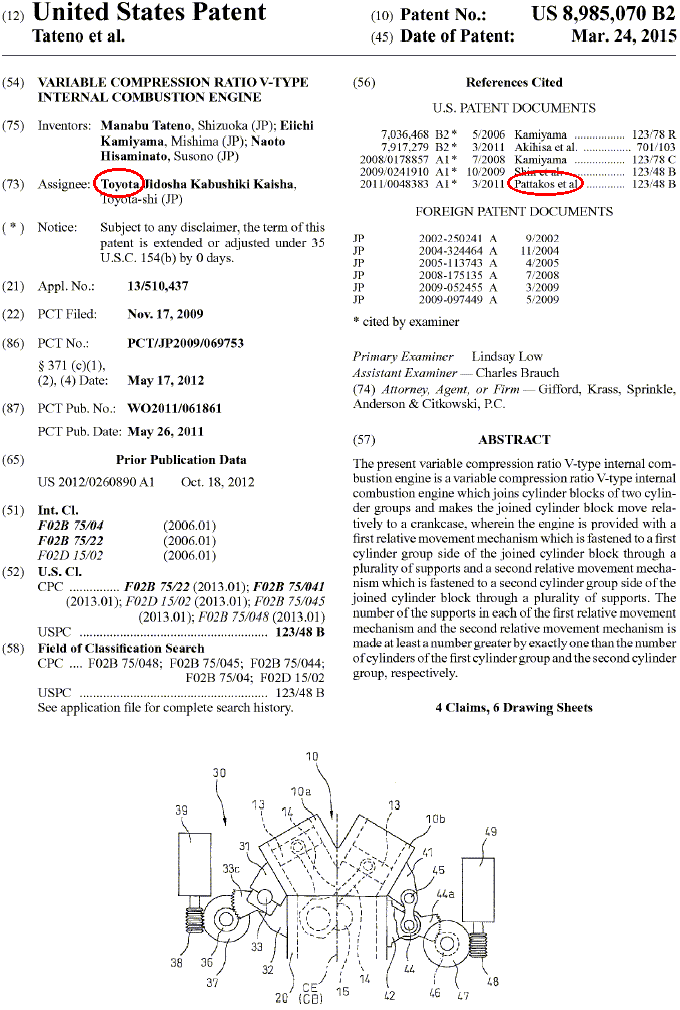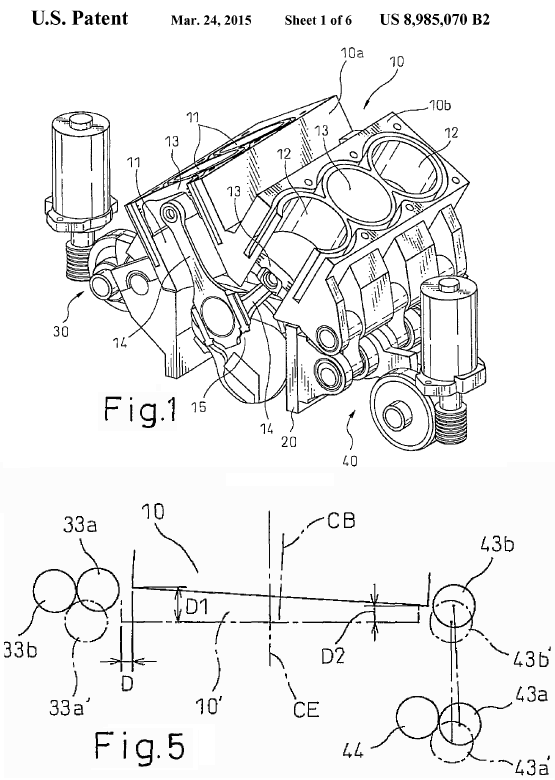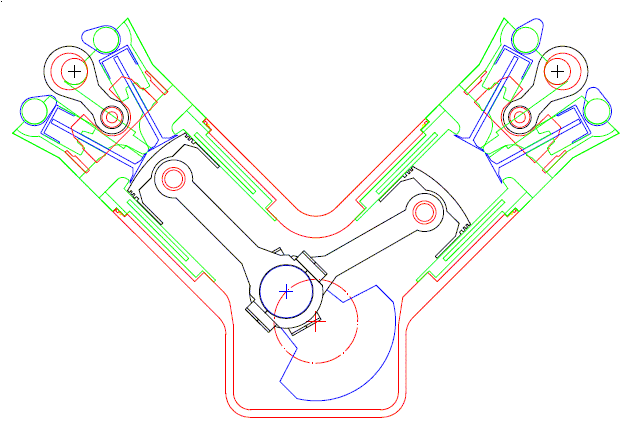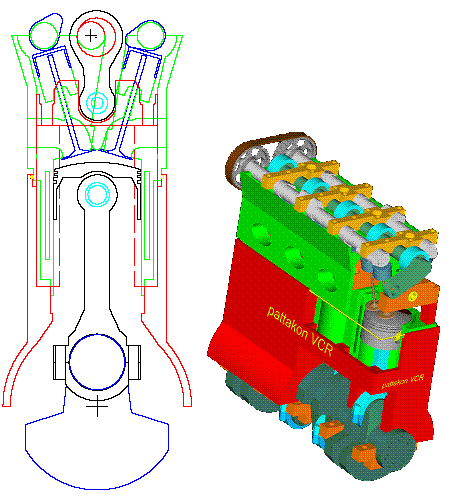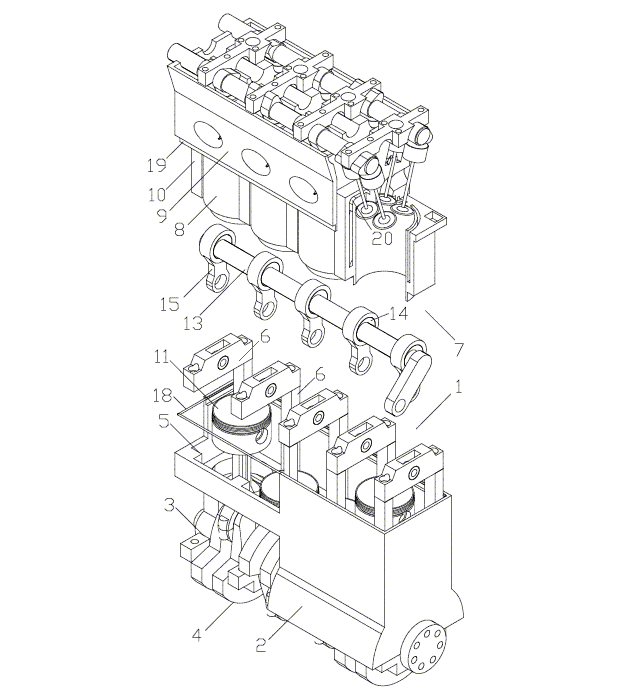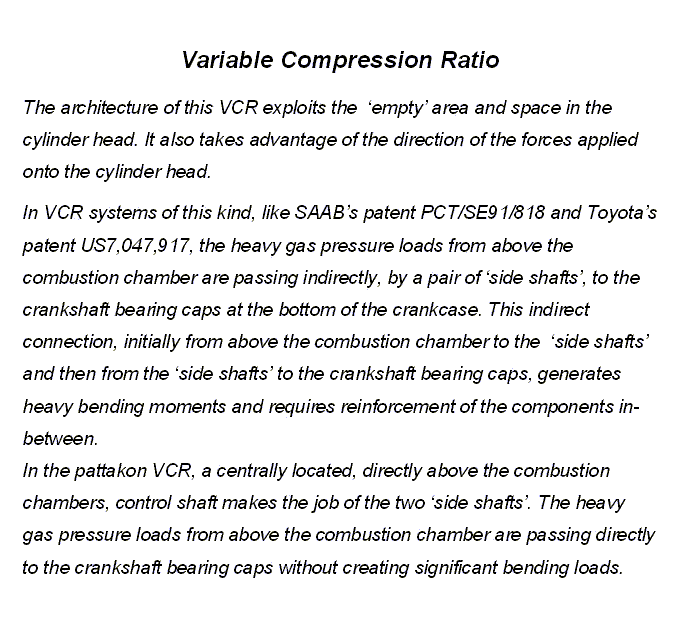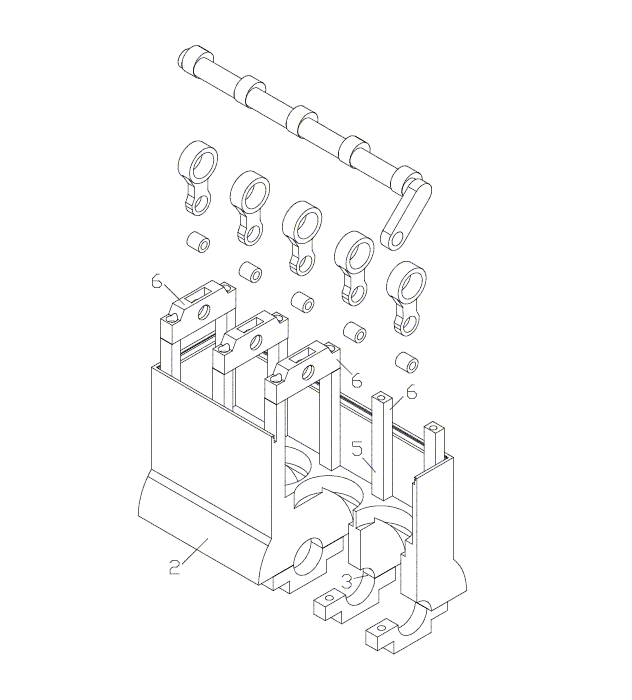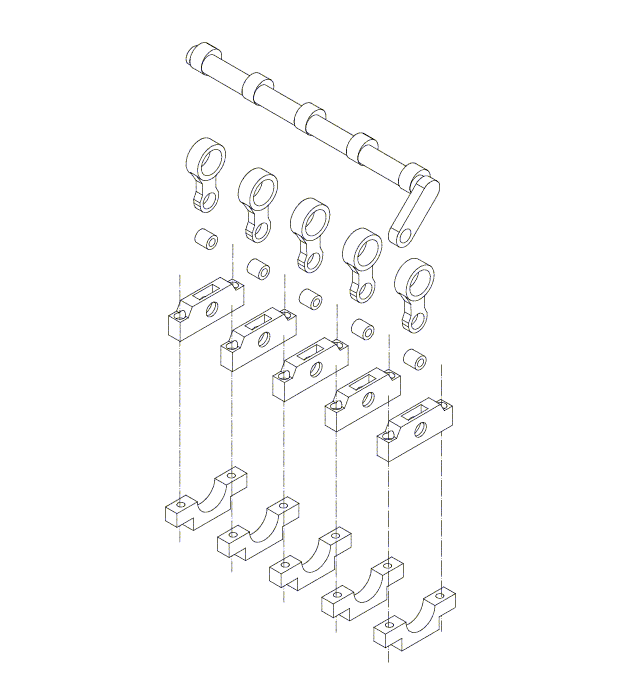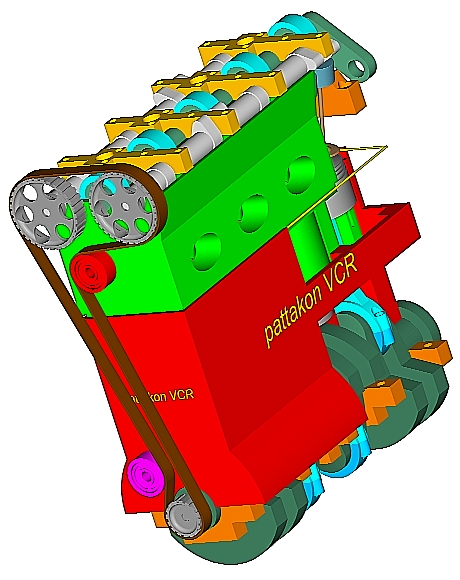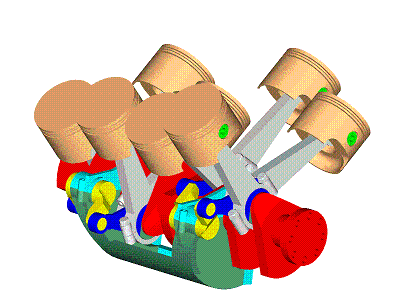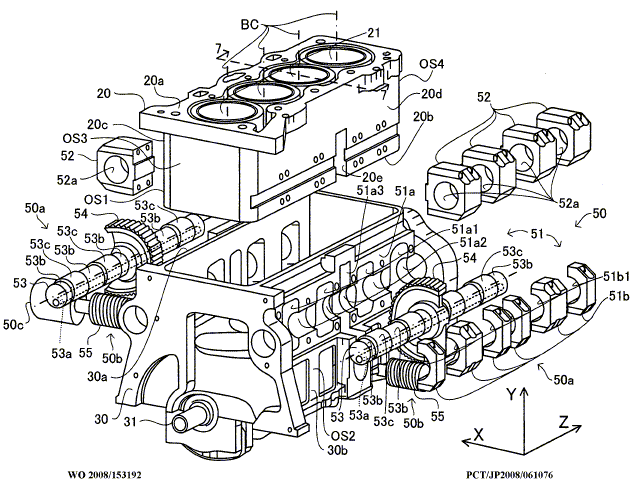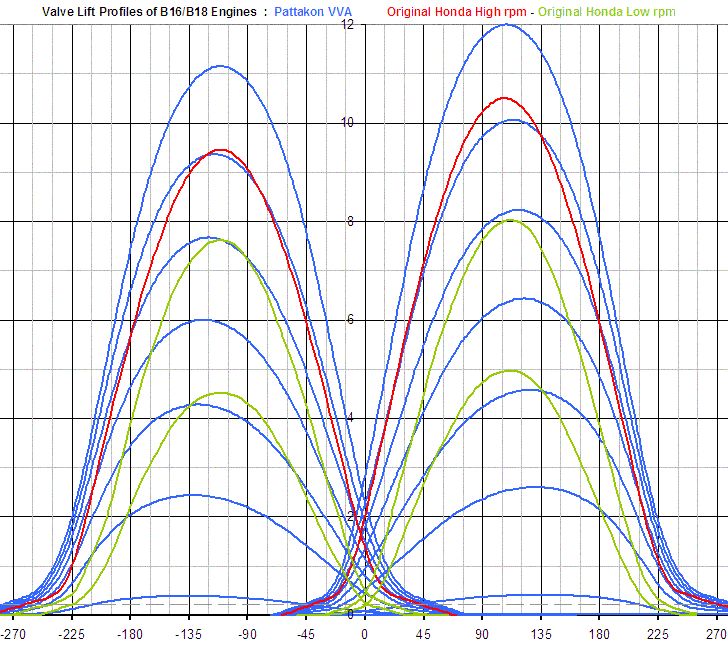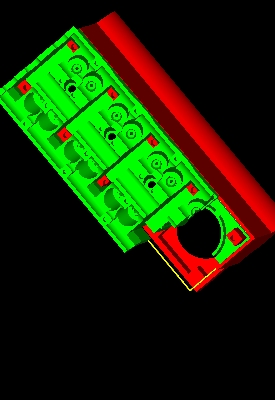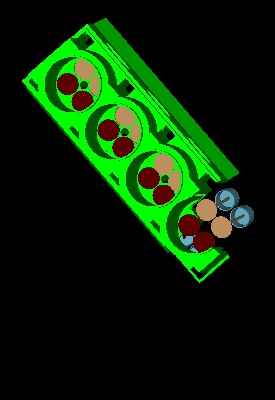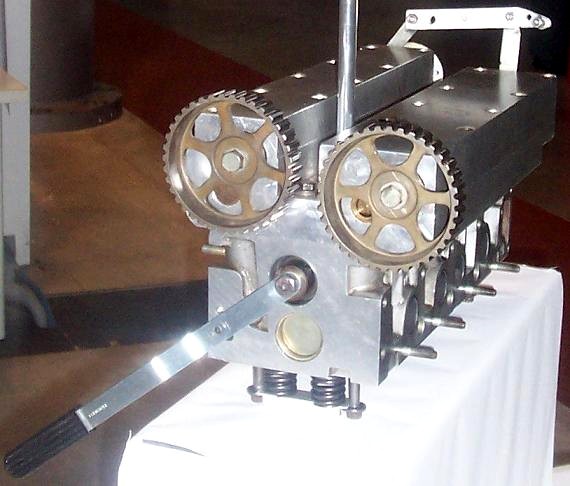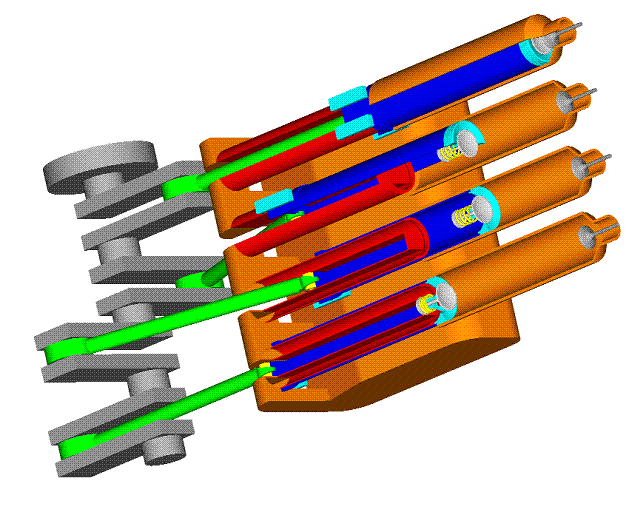Hello Kelpiecross.
You write:
“Things not mentioned are the fact that the cylinder water jackets move about with CR variation and it would be tricky to arrange a connection through the outer structure to the inner sliding bits.”
“The intake and exhaust manifolds also have to move and this would add complexity as well.”
Take a conventional engine with 80mm stroke (for instance, 4-cylinder, 1,600cc, square: bore 80mm, stroke 80mm).
If h is the effective height of the dead volume, for a 10:1 compression ratio the h is:
(h+80)/h=10, i.e. h=80/9, i.e. h=8.9mm,
for 20:1 compression ratio, the effective height of the dead volume is h=4.2mm,
I.e. in order to vary the compression ratio from 10:1 to 20:1, the required displacement along the cylinder axes of the cylinder block together with the cylinder head is 8.9-4.2=4.7mm relative to the crankcase.
Think of a 5mm displacement.
Now think, or check, how much the conventional engine moves, relative to the car frame, every time you press the gas pedal increasing the load.
The engine moves and turns on its supports, with the elastic mounts of the engine enabling a much bigger displacement than 5mm.
The connection of the radiator (which, typically, is secured on the car frame) with the cylinder block of a conventional engine is elastic (rubber pipes) to allow this displacement.
Similarly, the elastic supports of the exhaust pipes on the car frame allow the oscillation of the engine on its elastic supports to happen without any damage.
Similarly, the connection of the air filter (which, typically, is secured on the car frame) with the intake manifold (which, typically, is secured on the cylinder head) is not rigid, allowing the oscillation of the engine on its elastic supports at various directions.
So, a linear displacement for 5mm of the cylinder head and cylinder block relative to the crankcase (or relative to the casing of the engine) is anything but a problem.
The elastic pipes from the radiator are connected directly on the cylinder head.
The intake manifold is secured to the cylinder head.
The exhaust manifold is also secured to the cylinder head, with the exhaust pipes being secured to the exhaust manifold and being elastically supported on the car frame the conventional way.
You also write:
“the added complexity and expense of VCR probably outweigh any advantages.”
Quote from
http://www.mackborin...s_Features.aspx
Advanced Monoblock Design
In the STEYR MOTORS Monoblock engine design, the traditional engine block and cylinder head are made as a single casting, using a special high tensile alloy. By eliminating high torque cylinder head bolts and the gasket, cylinder roundness is not compromised. Additionally, stress is reduced by elimination of temperature variations caused by “hot spots” around cylinder head bolt locations.

The engine Monoblock is completely encased in an aluminum housing which reduces stress, allows more uniform cooling and also reduces noise and vibration transmission throughout the boat. The aluminum shell, not the engine block, support auxiliaries such as the starter, intake and exhaust manifolds, making it easier to adapt the engine to unique applications.
End of quote
Quote from
http://blogs.dieselp...teyr-monoblock/
The Steyr Monoblock combines the block and cylinder combustion chamber in one casting.

The Monoblock design allows this engine to have a coolant jacket where the traditional headgasket would be. As an added bonus the combustion chamber does not have to be clamped together with bolts which distort the roundness of the cylinders. A drawback would be not being able to get the valves out as easily.
The cam shaft housing of the Steyr is like a normal head split in half with the combustion chamber portion being cast as one with the block and the part that houses the cam, valves and unit injectors being removable. The unit injector found in many vehicles today is produced by Bosch etc, but is Steyr's design and patent.

End of quote
It seems the monoblock design has significant advantages even for a non-VCR engine.
Think of the differences between the monoblock of Steyr and the monoblock of the pattakon VCR:
instead of securing the bottom of the monoblock (i.e. the bottom of the assembly of the cylinder head with the cylinder block) on the crankcase,
in the pattakon VCR the crankcase extends (by pillars and bridges) inside the cylinder head, above the combustion chambers, forming a robust – yet lightweight – crane structure wherein it is supported the cylinder head.
Think a little more about this:
in Styer the heavy combustion loads travel through the structure of the cylinder head to the cylinder block, and then they pass to the crankcase,
in the pattakon VCR the heavy combustion loads are taken directly by the crankcase leaving the cylinder block free.
To put it differently:
I think that the support of the "cylinder head - cylinder block" assembly onto the crankcase is so good in the pattakon VCR that even in non-VCR engines the same architecture should be followed.
Besides improving cylinder roundness, the pattakon VCR allows a more lightweight structure, too.
An engine with the pattakon VCR on it, is not necessarily heavier than a similar non-VCR conventional engine.
In comparison, an engine with the SAAB SVC (or the Toyota VCR) on it, has many reasons to be substantially heavier than a similar non-VCR engine.
You also write:
“The SAAB hinged-block engine layout would probably be a better solution to a VCR design. It would not weigh as much as a Pattakon and the cam drive can be arranged so as to drive the cam from a pulley coaxial with the hinge point - likewise the exhaust joint can also be coaxial with the hinge.”
Did you understand the way the pattakon VCR keeps the synchronization of crankshaft / camshafts?
It is quite simple and accurate.
Please take another read at post #10.
As for support of the exhaust pipes on the exhaust manifold of the SAAB VCR, things are not at all easy. You have a set of long pipes secured at one end on the exhaust manifold. They rotate about the pivot together with the cylinder head and cylinder block by up to 4 degrees. Take a 4m long pipe and rotate it, about its one end, for 4 degrees. The other end moves for more than ten inches (254mm).
You need a substantially flexible connection of the exhaust pipes with the exhaust manifold of the SAAB SVC, otherwise the VCR is not functional. A flexible or pivotal connection in the hot exhaust pipes is inevitably heavy, expensive and noisy.
In comparison, the displacement of the free end (at the back of the car) of the exhaust pipes of the pattacon VCR is less than 5mm. The elastic supports of the exhaust pipe in any conventional car allow way more than such a small displacement.
Besides the problems on the exhaust, the hinge architecture of the SAAB SVC makes the sealing (or lubricant and of noise) difficult, heavy and expensive. While an elastic cover can keep the lubricant into the crankcase allowing the pivotal motion of the cylinder head / cylinder block relative to the crankcase, it is not good for the noise.
If you add in the previous the structural problem of the SAAB SVC (huge bending loads, oscillations of the cylinder head / cylinder block, “out of round” deformation of the cylinder liners etc), it seems there were good reasons for not putting it in production.
As I wrote again, SAAB solution of the VCR problem creates others, much more difficult to be solved, problems.
Some of these problems, but not the significant ones, are addressed by Toyota’s VCR’s.
So, please take another look at the pattakon VCR and get beck with your justified technical objections.
By the way, what I think is that the manufacturing cost (and the weight) of the pattakon VCR is the same with the manufacturing cost (and weight) of a similar conventional engine.
As for the licensing cost (post #3),
if the one US dollar per engine offered to the first big car maker that will ask to put the pattakon VCR in mass production (with, at least, 100,000 pieces per year) is considered expensive, a discount can be offered after demand.
By the way,
think the cost, so far, of the patents (lawyers, engineers, fees, etc etc) for VCR’s filed by Toyota; and for the moment in Toyota they still have not a technically good VCR (a viable VCR) to put in production. Or they have?
Thanks
Manolis Pattakos
Edited by manolis, 21 April 2015 - 05:22.
